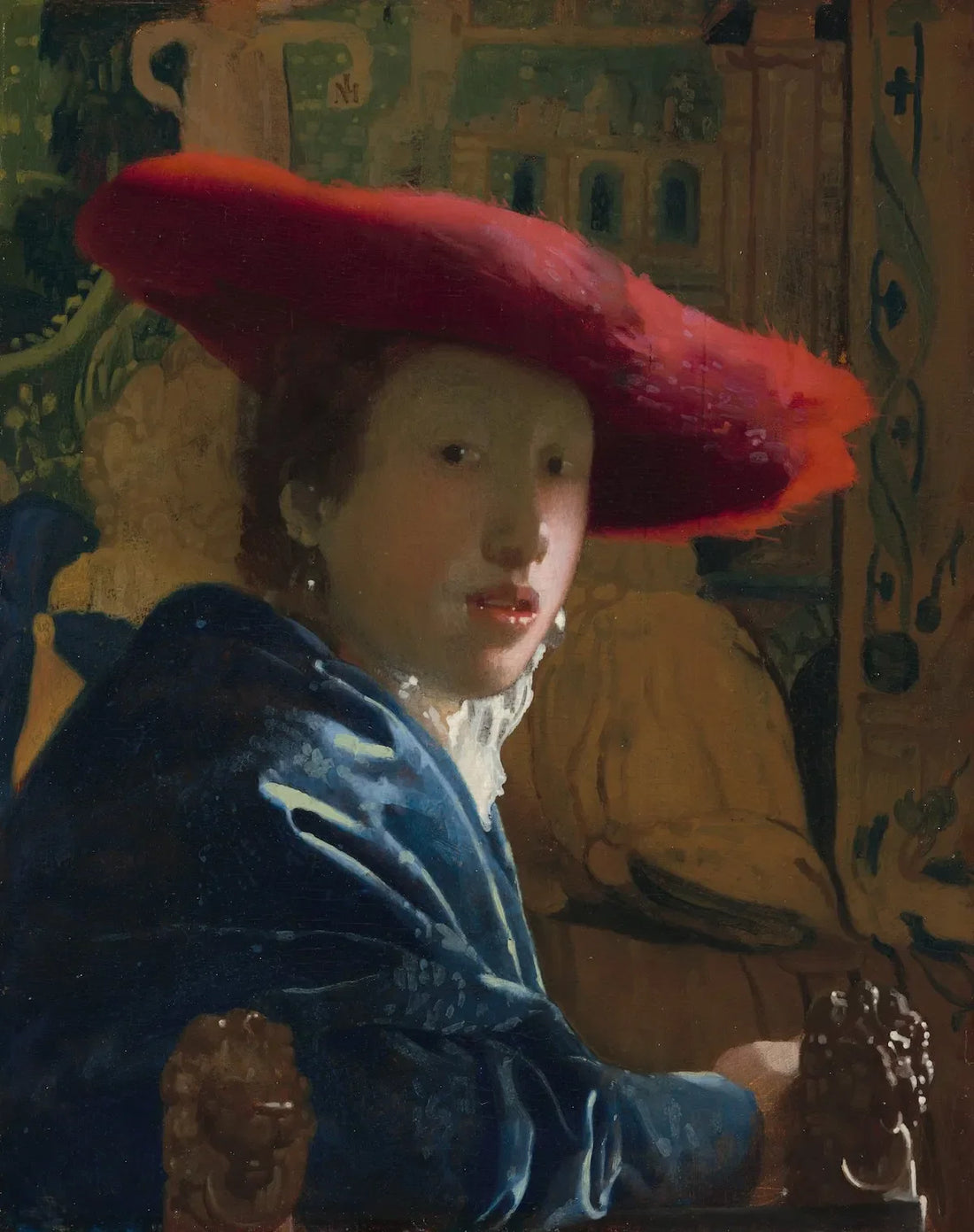
Revealing the Hidden Male Portrait Beneath Vermeer's "Girl with the Red Hat"
Share
Johannes Vermeer's Girl with the Red Hat has long captivated art lovers with its vibrant colors and intimate portrayal. However, recent research using advanced imaging techniques has uncovered a startling secret: beneath the visible painting lies a hidden portrait of a man. This discovery offers fresh insights into Vermeer’s early career and painting process, reshaping art historical understanding. The hidden artwork, possibly Vermeer's earliest known male portrait, was revealed during a technical examination at the National Gallery of Art. The painting’s unique wooden panel substrate made it a perfect candidate for these investigations, which exposed the underlying figure wearing a broad-brimmed hat and elaborate collar. This unexpected finding deepens our knowledge of the artist’s early style and experimentation Girl with the Red Hat.

The unearthing of this underpainting emphasizes the intricate process Vermeer used when crafting his compositions. Art conservators found that the buried portrait featured loose, dynamic brushstrokes markedly different from the polished finish above, which aligns well with historical accounts of early-stage painting practices during the Dutch Golden Age. By employing underpainting techniques, painters like Vermeer established tonal values and forms before layering precise details and colors. The revealed portrait’s distinctive costume and period style date it between 1650 and 1655, offering clues that it might represent Vermeer’s initial ventures into portraiture, previously undocumented Johannes Vermeer.
There remains an ongoing scholarly debate regarding the authorship of this hidden portrait. While many experts lean towards Vermeer due to the consistent timeline with his earliest known works, some suggest that the piece might have been created by Carel Fabritius, a fellow Delft painter, known for his unique approach and historically underrepresented body of works. This speculation is supported by inventory lists that included Fabritius’s works in Vermeer’s possession and the common practice of reusing valuable wooden panels during that era. Regardless, the discovery highlights the interconnectedness of artists working in Delft and the layers of artistic exploration hidden beneath celebrated masterpieces Carel Fabritius.
The Girl with the Red Hat itself is a prime example of a tronie, a Dutch Golden Age genre portraying expressive faces or character studies rather than formal portraits. This genre allowed artists to experiment with costume, expression, and the play of light and shadow. Vermeer’s vivid use of the red feathered hat combined with the delicate rendering of textures demonstrates his emerging mastery of color and light dynamics. Importantly, some scholars contextualize this work within Vermeer’s reputed use of the camera obscura, a device believed to aid in achieving realistic light effects and perspective Dutch Golden Age painting.
For those interested in deeper exploration, the National Gallery of Art provides detailed visual documentation of the Girl with the Red Hat, including insights into its layered composition and the remarkable imaging technology that exposed the hidden portrait. Experts and art enthusiasts can learn how such technological advancements are transforming the study of art history and conservation. The discovery continues to fuel fresh discourse and inspires reevaluation of other 17th-century artworks, reminding us that beneath visible surfaces, history often keeps intriguing stories yet to be found Underpainting technique.
Frequently Asked Questions (FAQ)
Q: How was the hidden portrait under Girl with the Red Hat discovered?
A: The hidden male portrait was found through advanced imaging technologies like X-rays and neutron reflectography employed at the National Gallery of Art during conservation efforts Girl with the Red Hat.
Q: Why is the hidden portrait important to art history?
A: It potentially represents Vermeer’s earliest known painting and his only surviving male portrait, providing insight into his creative process and early artistic experiments Johannes Vermeer.
Q: Could the underpainting be by another artist?
A: Some scholars propose Carel Fabritius, Vermeer’s contemporary and fellow Delft artist, might be the creator, given stylistic differences and historical context Carel Fabritius.
Q: What is a tronie and how does it relate to this painting?
A: A tronie is an expressive, informal study of faces or character types popular in Dutch Golden Age art. Girl with the Red Hat is categorized as such due to its focus on expression and costume rather than formal portraiture Dutch Golden Age painting.
Q: What role does underpainting play in Vermeer’s work?
A: Underpainting serves as a foundational layer where tone and form are loosely defined, which Vermeer refined in subsequent layers to achieve his renowned detail and color precision Underpainting technique.
